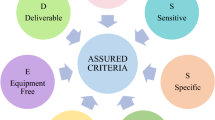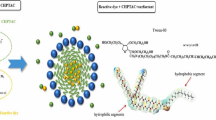Abstract
The use of inkjet printing for pharmaceutical manufacturing is gaining interest for production of personalized dosage forms tailored to specific patients. As part of the manufacturing, it is imperative to ensure that the correct dose is printed. The aim of this study was to use inkjet printing for manufacturing of personalized dosage forms combined with the use of near-infrared (NIR) and Raman spectroscopy as complementary analytical techniques for active pharmaceutical ingredient (API) quantification of the inkjet-printed dosage forms. Three APIs, propranolol (0.5–4.1 mg), montelukast (2.1–12.1 mg), and haloperidol (0.6–4.1 mg) were inkjet printed in 1 cm2 areas on a porous substrate. The printed doses were non-destructively analyzed by transmission NIR and Raman spectroscopy (both transmission and backscatter). X-ray computed microtomography (μ-CT) analysis was undertaken for porosity measurements of the substrate. The API content was confirmed using high-performance liquid chromatography (HPLC), and the content in the dosage forms was modeled from the NIR and Raman spectra using partial least squares regression (PLS). HPLC analysis revealed a linear correlation of the number of layers printed to the API content. The resulting PLS models for both NIR and Raman had R2 values between 0.95 and 0.99. The best predictive model was obtained using NIR, followed by Raman spectroscopy. μ-CT revealed the substrate to be highly porous and optimal for inkjet printing. In conclusion, NIR and Raman spectroscopic techniques could be used complementary as fast API quantification tools for inkjet-printed medicines.





Similar content being viewed by others
Change history
26 June 2019
Mohammed Al-Sharabi’s affiliation was incorrect at the time of publishing. The updated affiliation appears below.
References
Daly R, Harrington TS, Martin GD, Hutchings IM. Inkjet printing for pharmaceutics—a review of research and manufacturing. Int J Pharm. 2015;494(2):554–67. https://doi.org/10.1016/j.ijpharm.2015.03.017.
Scoutaris N, Ross S, Douroumis D. Current trends on medical and pharmaceutical applications of inkjet printing technology. Pharm Res. 2016;33(8):1799–816. https://doi.org/10.1007/s11095-016-1931-3.
Alomari M, Mohamed FH, Basit AW, Gaisford S. Personalised dosing: printing a dose of one’s own medicine. Int J Pharm. 2015;494(2):568–77. https://doi.org/10.1016/j.ijpharm.2014.12.006.
Kolakovic R, Viitala T, Ihalainen P, Genina N, Peltonen J, Sandler N. Printing technologies in fabrication of drug delivery systems. Exp Opin Drug Deliv. 2013;10(12):1711–23. https://doi.org/10.1517/17425247.2013.859134.
Edinger M, Jacobsen J, Bar-Shalom D, Rantanen J, Genina N. Analytical aspects of printed oral dosage forms. Int J Pharm. 2018;553(1):97–108. https://doi.org/10.1016/j.ijpharm.2018.10.030.
Lind J, Kälvemark Sporrong S, Kaae S, Rantanen J, Genina N. Social aspects in additive manufacturing of pharmaceutical products. Exp Opin Drug Deliv. 2017;14(8):927–36. https://doi.org/10.1080/17425247.2017.1266336.
Thabet Y, Lunter D, Breitkreutz J. Continuous manufacturing and analytical characterization of fixed-dose, multilayer orodispersible films. Eur J Pharm Sci. 2018;117:236–44. https://doi.org/10.1016/j.ejps.2018.02.030.
Thabet Y, Lunter D, Breitkreutz J. Continuous inkjet printing of enalapril maleate onto orodispersible film formulations. Int J Pharm. 2018;546(1):180–7. https://doi.org/10.1016/j.ijpharm.2018.04.064.
Council of Europe. European Pharmacopoeia. 9th ed. Strasbourg: 5.25—Process Analytical Technology. Council of Europe; 2019.
Vakili H, Kolakovic R, Genina N, Marmion M, Salo H, Ihalainen P, et al. Hyperspectral imaging in quality control of inkjet printed personalised dosage forms. Int J Pharm. 2015;483(1):244–9. https://doi.org/10.1016/j.ijpharm.2014.12.034.
Vakili H, Nyman JO, Genina N, Preis M, Sandler N. Application of a colorimetric technique in quality control for printed pediatric orodispersible drug delivery systems containing propranolol hydrochloride. Int J Pharm. 2016;511(1):606–18. https://doi.org/10.1016/j.ijpharm.2016.07.032.
Wickström H, Nyman JO, Indola M, Sundelin H, Kronberg L, Preis M, et al. Colorimetry as quality control tool for individual inkjet-printed pediatric formulations. AAPS PharmSciTech. 2017;18(2):293–302. https://doi.org/10.1208/s12249-016-0620-1.
Vakili H, Wickström H, Desai D, Preis M, Sandler N. Application of a handheld NIR spectrometer in prediction of drug content in inkjet printed orodispersible formulations containing prednisolone and levothyroxine. Int J Pharm. 2017;524(1):414–23. https://doi.org/10.1016/j.ijpharm.2017.04.014.
Palo M, Kogermann K, Genina N, Fors D, Peltonen J, Heinämäki J, et al. Quantification of caffeine and loperamide in printed formulations by infrared spectroscopy. J Drug Deliv Sci Technol. 2016;34:60–70. https://doi.org/10.1016/j.jddst.2016.02.007.
Edinger M, Bar-Shalom D, Rantanen J, Genina N. Visualization and non-destructive quantification of inkjet-printed pharmaceuticals on different substrates using Raman spectroscopy and Raman chemical imaging. Pharm Res. 2017;34(5):1023–36. https://doi.org/10.1007/s11095-017-2126-2.
Meléndez PA, Kane KM, Ashvar CS, Albrecht M, Smith PA. Thermal inkjet application in the preparation of oral dosage forms: dispensing of prednisolone solutions and polymorphic characterization by solid-state spectroscopic techniques. J Pharm Sci. 2008;97(7):2619–36. https://doi.org/10.1002/jps.21189.
Scoutaris N, Malamatari M, Letellier A, Douroumis D. Jet dispensing of multi-layered films for the co-delivery of three antihypertensive agents. Drug Deliv Transl Res. 2018;8(1):32–42. https://doi.org/10.1007/s13346-017-0430-3.
Amigo JM. Practical issues of hyperspectral imaging analysis of solid dosage forms. Anal Bioanal Chem. 2010;398(1):93–109. https://doi.org/10.1007/s00216-010-3828-z.
Iftimi L-D, Edinger M, Bar-Shalom D, Rantanen J, Genina N. Edible solid foams as porous substrates for inkjet-printable pharmaceuticals. Eur J Pharm Biopharm. 2019;136:38–47. https://doi.org/10.1016/j.ejpb.2019.01.004.
Khorasani M, Amigo JM, Sonnergaard J, Olsen P, Bertelsen P, Rantanen J. Visualization and prediction of porosity in roller compacted ribbons with near-infrared chemical imaging (NIR-CI). J Pharm Biomed Anal. 2015;109:11–7. https://doi.org/10.1016/j.jpba.2015.02.008.
Johansson J, Sparén A, Svensson O. Quantitative transmission Raman spectroscopy of pharmaceutical tablets and capsules. Appl Spectrosc. 2007;61(11):1211–8.
Iftimi L-D, Edinger M, Bar-Shalom D, Rantanen J, Genina N. Edible solid foams as porous substrates for inkjet-printable pharmaceuticals. Eur J Pharm Biopharm. 2018;136:38–47. https://doi.org/10.1016/j.ejpb.2019.01.004.
Rambhatla S, Heat PM. Mass transfer issues in freeze-drying process development. In: Constantino H, Pikal M, editors. Lyophilization of biopharmaceuticals. Arlington: American Association of Pharmaceutical Scientists; 2004. p. 75–110.
Edinger M, Bar-Shalom D, Sandler N, Rantanen J, Genina N. QR encoded smart oral dosage forms by inkjet printing. Int J Pharm. 2018;536(1):138–45. https://doi.org/10.1016/j.ijpharm.2017.11.052.
Zeitler JA, Gladden LF. In-vitro tomography and non-destructive imaging at depth of pharmaceutical solid dosage forms. Eur J Pharm Biopharm. 2009;71(1):2–22. https://doi.org/10.1016/j.ejpb.2008.08.012.
Oosthuizen P, Emsley RA, Turner J, Keyter N. Determining the optimal dose of haloperidol in first-episode psychosis. J Psych Pharm. 2001;15(4):251–5. https://doi.org/10.1177/026988110101500403.
Kahn RS, Fleischhacker WW, Boter H, Davidson M, Vergouwe Y, Keet IPM, et al. Effectiveness of antipsychotic drugs in first-episode schizophrenia and schizophreniform disorder: an open randomised clinical trial. Lancet. 2008;371(9618):1085–97. https://doi.org/10.1016/S0140-6736(08)60486-9.
DLI. Montelukast. Available from http://pro.medicin.dk/Medicin/Indholdsstoffer/2285. Accessed 01 Aug 2018. Dansk Lægemiddel Information A/S; 2018.
McGee P, Miller S, Black C, Hoey S. Propranolol for infantile haemangioma: a review of current dosing regime in a regional paediatric hospital. Ulster Med J. 2013;82(1):16–20.
DLI. Propranolol. Available from http://pro.medicin.dk/Medicin/Indholdsstoffer/889. Accessed 01 Aug 2018. Dansk Lægemiddel Information A/S; 2018.
Zimmermann B, Kohler A. Optimizing Savitzky–Golay parameters for improving spectral resolution and quantification in infrared spectroscopy. Appl Spectrosc. 2013;67(8):892–902. https://doi.org/10.1366/12-06723.
Funding
The results presented in this work was supported by The Danish Council for Independent Research (DFF), Technology and Production Sciences (FTP), grant number 12-126515/0602-02670B and the Drug Research Academy (University of Copenhagen).
Author information
Authors and Affiliations
Corresponding author
Additional information
Guest Editors: William C. Stagner and Rahul V. Haware
Publisher’s Note
Springer Nature remains neutral with regard to jurisdictional claims in published maps and institutional affiliations.
Electronic Supplementary Material
ESM 1
(DOCX 1407 kb)
Rights and permissions
About this article
Cite this article
Edinger, M., Iftimi, LD., Markl, D. et al. Quantification of Inkjet-Printed Pharmaceuticals on Porous Substrates Using Raman Spectroscopy and Near-Infrared Spectroscopy. AAPS PharmSciTech 20, 207 (2019). https://doi.org/10.1208/s12249-019-1423-y
Received:
Accepted:
Published:
DOI: https://doi.org/10.1208/s12249-019-1423-y




